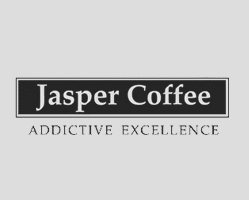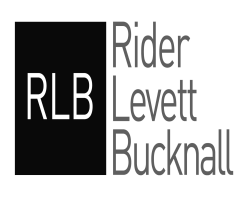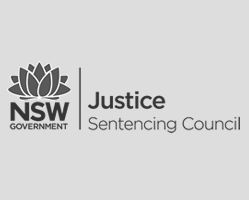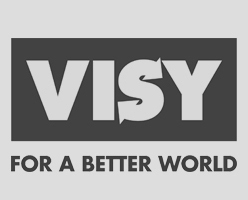
The Energy Savings Scheme for LED Lighting
The NSW Energy Savings Scheme (ESS) is a state governmental scheme with the principal objective of achieving energy savings and reducing carbon emissions by creating a financial incentive to reduce electricity consumption. This incentive exists by way of rewarding organisations that undertake eligible projects that either reduce the consumption of electricity or improve the efficiency of electricity use. These eligible projects are known as Recognised Energy Saving Activities (RESAs) and have a range of inclusions, however the most prominently implemented project is the commercial lighting upgrade.
As an Accredited Certificate Provider (ACP), CRI is able to implement energy savings projects and create Energy Savings Certificates (ESCs). An ESC is a digital and tradeable certificate which represents the equivalent of 1 tonne of carbon dioxide equivalent of energy savings. Once created, CRI is able to register and organise the sale of, any ESC’s resulting from the scope of a project in order to offset the cost of said project. This offset occurs by way of the “ESC rebate” provided to your business upfront, which is identifiable on any quotations that you may receive from CRI prior to the undertaking of any commercial lighting upgrade. In addition to the cost offset, the purchaser of the commercial lighting upgrade will also benefit from reduced electricity bills, resulting from increases in efficiency and a reduction in electricity consumption.
As the payer of the electricity bill at the site of the upgrade, the purchaser of the upgrade is responsible for the energy savings resulting from the project, and is known as the original energy saver. In order to benefit from the ESC rebate generated from the energy savings, the original energy saver must nominate CRI as the new Energy Saver, thus entitling CRI to the ownership of any ESCs created from the project.
The 4 Step Energy Savings Process for LED Lighting
CRI’s Energy Savings Process is able to be broken down into four key phases, which together form the extent of the commercial lighting project.
1. Consultation
CRI will conduct an on-going consultation with clientele prior to the preparation and sign off of an official quotation. During this phase, active discussion is held between CRI and the purchaser of the upgrade in order to define the most suitable lighting products for the proposed upgrade. CRI will also conduct numerous site visits in order to perform lighting walk-arounds, lighting analysis, and obtain an accurate lighting count for the purposes of quotation (free of charge). Once the scope of the project has been defined, an official quote will be delivered to the purchaser detailing the ESC rebate and total project cost. The official quotation will also contain conservative estimations of Expected Energy Savings, and the expected simple Return on Investment, based off an industry standard blended energy rate, dependent on site type. Once the signed quote has been received by CRI, an energy bill from within the last 12 months will be requested as proof of NMI, and a nomination form will be requested to be completed, naming CRI as the new energy saver.
Once an official quote has been signed and returned, CRI requires a monetary deposit consisting of 30% of the total product cost not including the ESC rebate, before any stock is ordered. Upon the delivery of the deposit, stock is ordered with an approximate delivery time of 1 to 4 weeks.
2. Pre-Install Compliance
In order to create ESCs from a lighting upgrade, CRI must collect evidence to ensure that the commercial lighting project is compliant with the ESS. In this phase of the project, CRI will conduct on-going Pre-Install Inspections in order to collect evidence detailing the site before the occurrence of any installations. This evidence is gathered from processes including lighting analysis, lighting count finalisation, lux measurement, space type verification and existing lighting verification. CRI will also organise contractor and installation logistics, and comply all required installation documentation to ensure the process is as simple as possible, and the installation occurs in-line with any specifications the purchaser may define.
3. Post-Install Compliance
Once the commercial lighting installation has been completed, further evidence must be collected by CRI to ensure scheme compliance. During this phase, evidence gathered details the site post-installation, as relevant lighting standards need to be met to ensure that there has been no reduction in lighting output or service levels. CRI will conduct lighting analysis, lux measurements and light-mapping to ensure that space type dependent lighting levels are compliant with those specified in the AS/NZS1680 Interior and Workplace Lighting Standards. Pending completion of install, CRI will also ensure the environmentally responsible removal of existing lighting. Quality Assurance will also be conducted on all installed lights to ensure that all products are meeting CRI’s and the customer’s requirements.
4. Project Finalisation
Once all compliance has been finalised, the project finalisation phase occurs, at which point all invoices are generated and finances organised. The purchaser of the commercial lighting upgrade will also receive an Energy Savings Summary, which provides a full summary of the expected energy savings resulting from the lighting upgrade. From this stage onwards, if any product issues are encountered, the purchaser should contact CRI directly in order to resolve the issue.
Further Information
For further information about the ESS, please visit:
GET INTO ENERGY EFFICIENCY TODAY !
Clients
Our clients achieve LowCO2 or NoCO2 Certification












